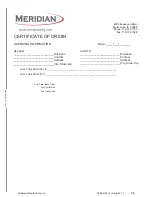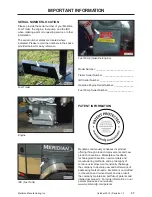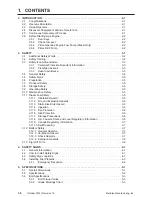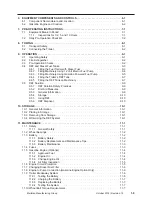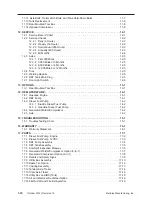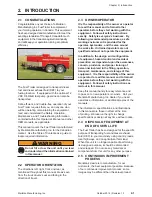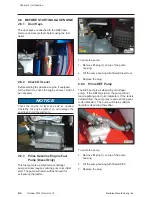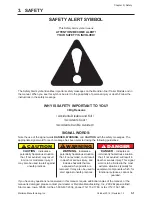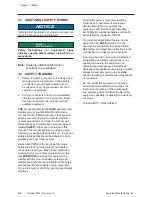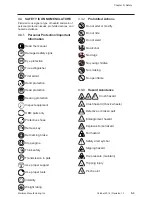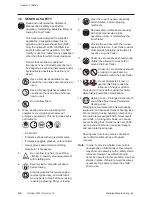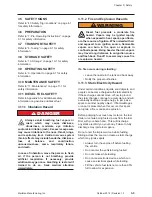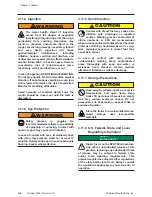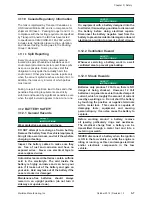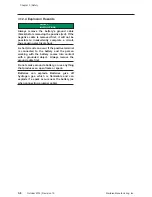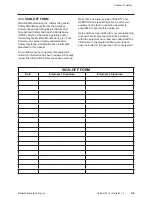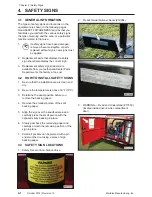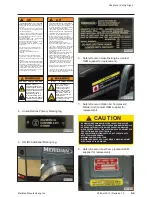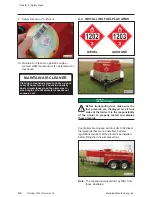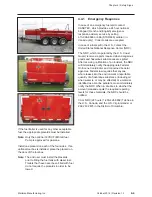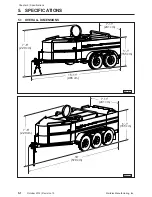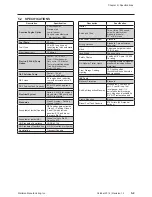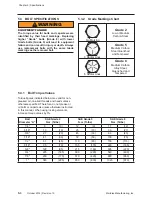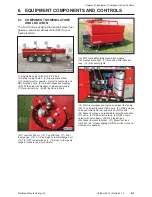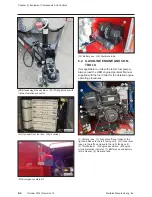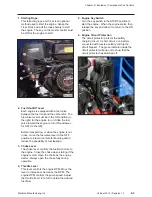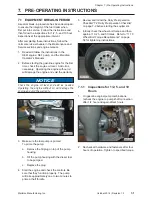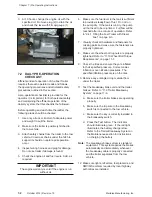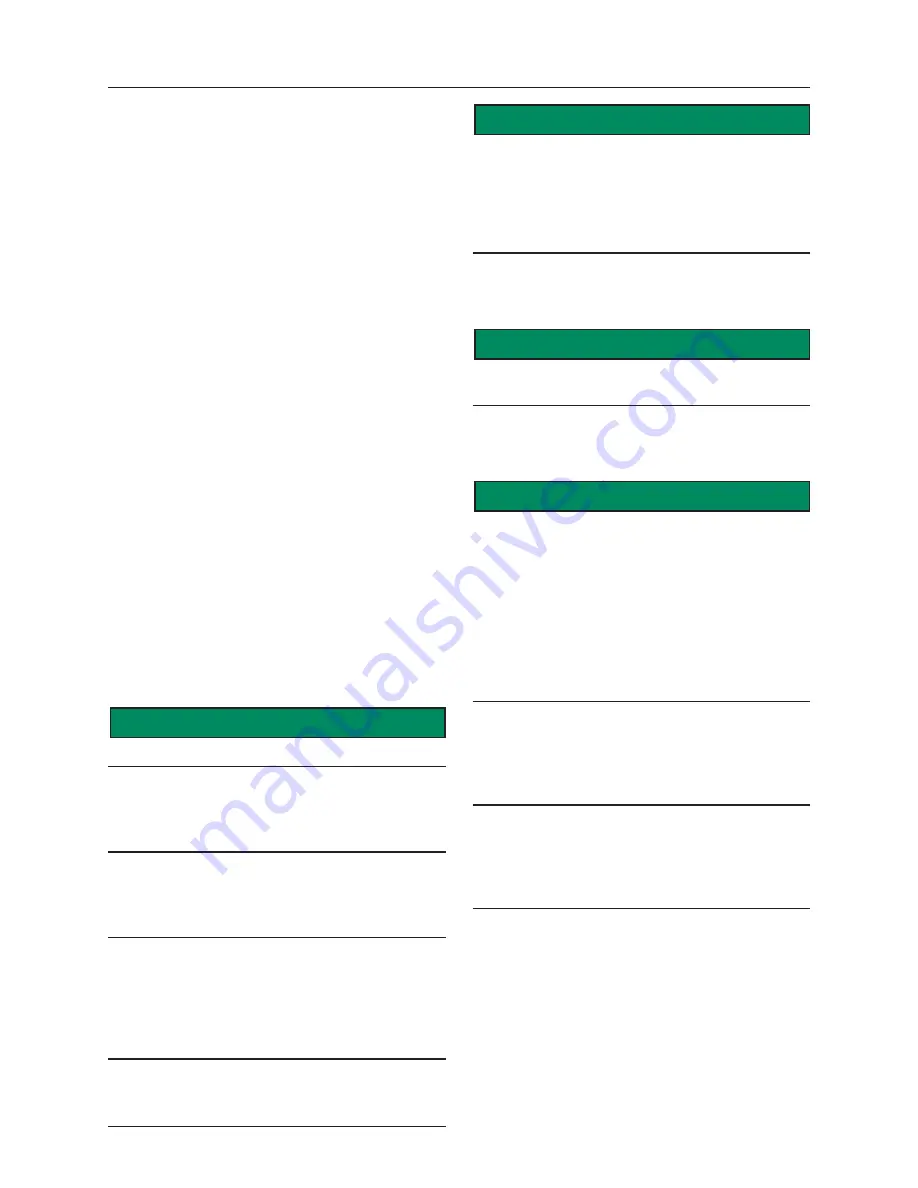
Meridian Manufacturing, Inc.
October 2014 | Revision 1.0
3-7
3.11.9 Canada Regulatory Information
The tank is registered by Transport Canada as a
UN Standard Mobile IBC and is in compliance for
shipment of Class 3 - Packing Groups II and III. In
compliance with the testing requirements specified
by Transport Canada, the IBC has been tested
to specification CAN/CGSB-43.146-2002, which
includes leak, hydraulic pressure, drop, vibration,
and roll-over testing. Testing was to the Packing
Group II standard.
3.11.10
Spill Reporting
Every province and territory requires persons
involved in spills of hazardous substances and
environmental contaminants to report those spills
as soon as possible. Some provinces limit this
obligation to only spills that actually harm the
environment. Other provinces require reports only
when the amount spilled reaches a certain limit. In
addition, the rules vary in terms of which parties
must report.
Failing to report a spill can lead to fines and other
penalties. Reporting requirements are strictly
enforced and backed by significant penalties, even
when the spill involved appears to be a minor one.
3.12 BATTERY SAFETY
3.12.1 General Hazards
SAFETY
INSTRUCTIONS
Wear protective eye wear and gloves.
DO NOT attempt to recharge a frozen battery.
Remove the battery from the vehicle/equipment,
bring it into a warm room, and let it thaw before
charging or testing.
Inspect the battery cables to make sure they
are free of rust and corrosion and have no
exposed wires. Never use electrical tape to
cover exposed wires.
Automotive lead-acid batteries contain sulfuric
acid in the electrolyte. The acid inside the
battery is highly corrosive and can burn your
skin if it leaks out of the battery and gets on
your skin. Acid may leak out of the battery if the
case is cracked or damaged.
Maintenance-free batteries should always
remain in an upright position (do not turn it
sideways or upside down).
SAFETY
INSTRUCTIONS
On equipment with a battery designed into the
fuel trailer, it is usually a good idea to disconnect
the battery before doing electrical repairs.
Disconnect the battery negative lead from the
battery to prevent accidental damage to onboard
electronics or wiring to prevent a short circuit.
3.12.2 Ventilation Hazard
SAFETY
INSTRUCTIONS
Whenever servicing a battery, work in a well
ventilated area to prevent gas buildup.
3.12.3
Shock Hazards
SAFETY
INSTRUCTIONS
Batteries only produce 12 Volts so there is NO
danger of being shocked. However, 12 Volt
batteries can generate several hundred amps of
current, which is roughly the amount of current
used by a welding arc. Do not short the battery
by touching the positive or negative terminals
with a metal tool. This current is capable of
damaging tools, equipment, and causing
personal injury. It can also cause the battery to
explode.
Before working around a battery, remove
all jewelry, particularly rings and necklaces.
The electrical charge from a battery can be
transmitted through a metal tool and into a
metal ring or watch.
NEVER disconnect a battery when the ignition
is ON in the tow vehicle, or while the engine is
idling or running, as this can damage electrical
and/or electronic components in the tow
vehicle.
Chapter 3 | Safety
Содержание Fuel Express
Страница 1: ...Certified For Canadian Market ...
Страница 6: ......
Страница 92: ...17 20 October 2014 Revision 1 0 Meridian Manufacturing Inc APPENDIX A ...
Страница 93: ...Meridian Manufacturing Inc October 2014 Revision 1 0 17 21 ...

